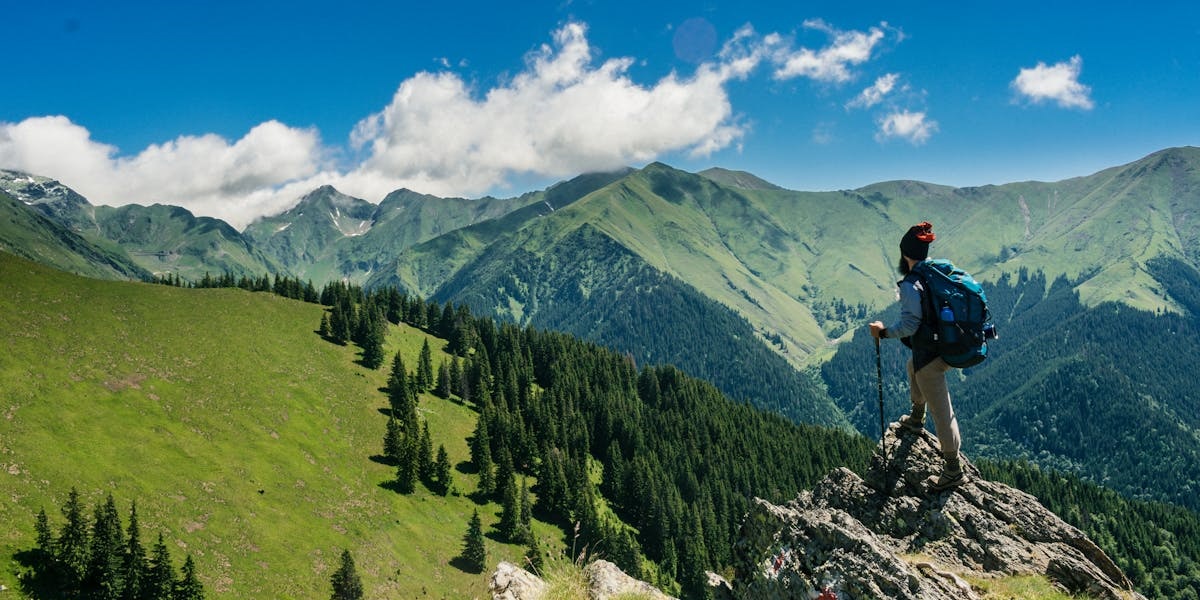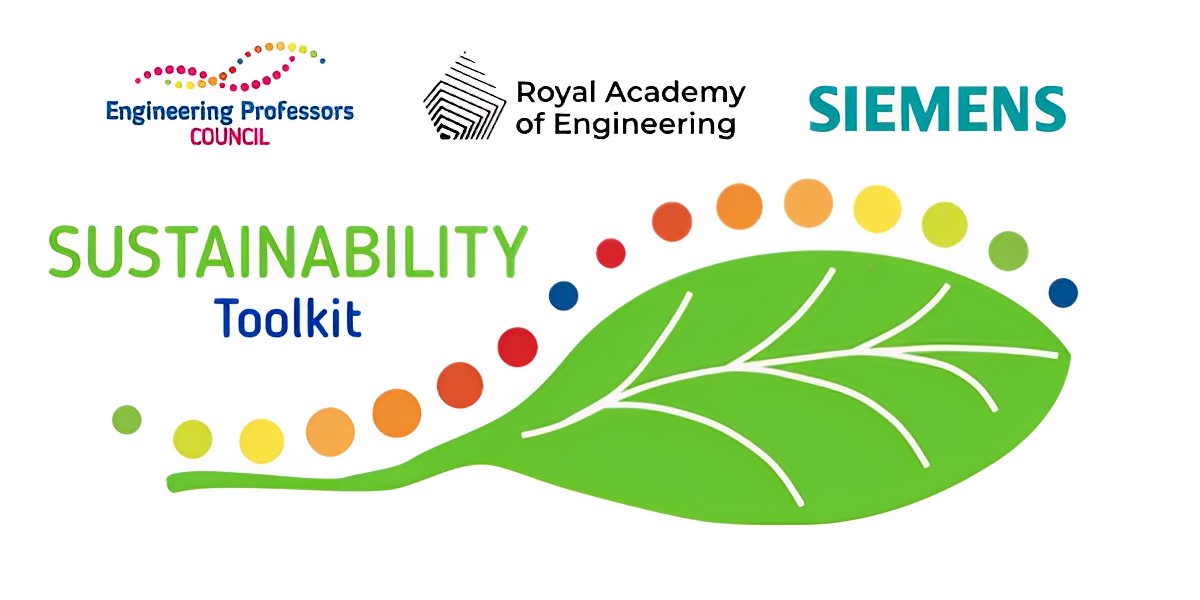Mike Murray, [Senior Teaching Fellow in Construction Management], discusses how he developed and implemented a teaching resource in the Sustainability Toolkit, and what he’s learned from integrating it into his modules over the years.
It has been said that ‘pedagogical innovation stems from very personal origins within the university teacher, who appears to seek to move towards their pedagogical ideal’ (Walder, 2014). So, please bear with me as I travel back along the path to where the story begins.
I introduced the coursework on Developing Intercultural Competence in my Engineering and Society module in 2015, and nine years on I am unable to recall why! It may have been an epiphany. I now carry a notepad in case I forget. I travel to university by train, and this affords an opportunity to gaze through the picture frame windows at the Perthshire countryside, and to daydream. Some of my best pedagogical interventions have been developed on train journeys, and more often than not they are informed by my readings of books and papers (and highlighting, see my penchant for stationery later!) on pedagogy in higher education. So, the intervention was not a macro-level programme intervention, it was not a meso-level case of Action Research, rather it was bottom-up micro-level, a do-it-yourself, intuitive pedagogy. No permission requested, no questions asked. Indeed, many of the teaching resources in the Sustainability Toolkit fall into this category. I rather like the idea of punk, guerilla, and pirate pedagogy (Murray,2023). However, on reflecting on the matter, I can see that my fascination with internationalising the curriculum has been a slow burner.
“We’re all Jock Tamson’s Bairns”
This is a colloquial conversational term used in Scotland to denote that we are all the same; we are all equal. On a global scale it suggests we are all world citizens. It has resonance with the UN Sustainable Development Goals (SDGs), and it sits comfortably in my outlook on life. It reflects my own maxim for academics in higher education- to treat each student as if they were your son, daughter, niece or nephew. That is, I have sought to reduce the power that I am granted as an expert and to see my students as co-learners travelling the same path. This is not a case of ‘sparing the rod to spoil the child’, it is not about ‘killing my students by kindness’, it is not about encouraging student to satisfice. Rather, it is a belief that universities should not be a sort of exam factory schooling that depends on many sages on the stages. I seek to introduce my students to the spirit and soul of learning, to ‘learn along the way’, to focus on the journey and not solely the destination. In these learning spaces, students can develop habits of mind consistent with lifelong learners such as curiosity about the world and other cultures and people.
This then is an apt moment to explain the title of this blog. The quote is taken from the Scottish novelist and travel writer Robert Louis Stevenson, grandson of lighthouse builder Robert Stevenson. For me, it says something about how we should look upon our planet and its people. Whilst it would be naively optimistic to suggest that our planet has no travel boundaries (i.e. North Korea) we all have something in common given we share space on our planets surface. This is everyone’s link to humanity. Whilst our cultures and customers may be different, we are global citizens on planet earth.
My Internationalisation at home
My journey to intercultural competence started long before I reached university. As a sixteen-year-old apprentice plumber attending Perth Technical College (1980-1984), I witnessed students from Uganda, Iran, and Iraq, who were enrolled on an air training course. Whilst I recall being somewhat envious of these students, thinking that they were cool and quite exotic, I know now they must have had their own issues settling into studies in a foreign country. My next exposure to international students came when I was a lecturer at North East Surrey College of Technology (1988-1992). In addition to my teaching role, I was a live in warden in a small student hostel, accommodating twelve male students each year. With students from Zimbabwe, Botswana, and Lesotho, my knowledge of the African continent was enhanced.
In my current role at Strathclyde I was involved in a European Union (EU) Tempus project (2004-2006) to establish a MSc Construction Management programme for the Department of Civil Engineering, University of Aleppo, Syria. Visting Syria, and hosting academics and students from Syria in Scotland, was a lesson in the generous hospitality extended to guests in Muslim societies. The project also involved partner academics from universities in France and Germany and all meetings were undertaken with a great sense of collegiality and conviviality. This project conveyed a sense of ‘brotherhood’ in learning, and a mission to improve industry practice and society in Syria. It was a great sense of personal disappointment to me when the war in Syria began in 2011, and thereafter when the UK populace voted to leave the EU in 2016. Of late, my students who hail from Syria, and the Ukraine (with refugee status) have helped my first-year students to see past the media coverage of their countries as only war-torn.
These episodes, and others, have shaped my professional interest in internationalisation. I have a healthy disrespect for treating our international guests as “cash cows” for UK Higher Education. In 2014 I established an International Society for students in the Civil and Environmental Engineering Department, with associated annual events (Robert Burns lunch) and a social calendar with visits to engineering projects. And in 2015 I introduced the internationalisation at home coursework for my first-year students.
Flags, Flags, Flags
Since 2015 the coursework has involved 147 international mentors, representing sixty nationalities*. Reading the list, I imagine the flags of these countries on poles, fluttering proudly in the wind above my university campus, a symbolic image that conveys a sense of a ‘United Nations’. Given the revised coursework brief places added importance on Education for Sustainable Development (ESD) it is important to recognise the disparity that is evident in this list vis-à-vis the SDGs. There are significant complexities and contradictions in hosting internation students from countries who are at war with each other, who have opposing religious and / or political views, who hail from countries damaged by climate change because of another country’s pollution. I have to confess that to date I have avoided this arena. I have not courted conflict and sought out divergent views on global issues. I have assumed (wrongly!) that all students are somewhat neutral.
When I heard that the Sustainability Toolkit was seeking examples of coursework that integrates ESD and the SDGs in engineering, I was eager to share this resource. Now, I hope others can learn from my experience as well as from the challenges I faced in implementing it and the lessons I’ve learned in doing so.
*Afghanistan, Angola, Australia, Austria Bulgaria, Brazil, Canada, China, Croatia, Democratic Republic Congo, Egypt, Ethiopia Eritrea, Estonia, Ghana, Hungary, Finland, France, Germany, Guyana, Greece, India, Indonesia, Iran, Italy, Ireland, Jordan, Kenya, Kuwait, Lebanon, Lithuanian, Luxembourg, Malawi, Malta, Malaysia Netherlands, Nepal, Nigeria, Norway, Oman, Panama, Pakistan, Poland, Qatar, Romania, Russia, Saudi Arabia, Singapore, Slovakia, South Africa, Spain, Sri Lanka, Sweden, Switzerland, Syria, Turks and Caicos Islands, , USA, Ukraine, Venezuela, Yemen, Zimbabwe.
Time for Reflection
Academic writing for publication is typically peer reviewed by critical friends. The process for submitting resources to the Toolkit was no different and has been subject to a ‘review-revise-resubmit’ process. This afforded an opportunity for self-reflection and to improve the coursework brief. The revised brief bolsters the link between Intercultural Competence (IC) and ESD through more explicit cognizance of SDGs. Moreover, given the original purpose of the coursework was to improve students IC, the revised coursework has a symbiotic link to engaging students in a decolonisation of the engineering curriculum, and for them to consider social justice and climate justice in engineering practice.
Challenges
Post-Brexit, there are fewer EU students across our undergraduate programmes. Over the past nine years I have sought assistance from students studying on our MSc & PhD programmes. However, a sizeable number of these students do not have an undergraduate civil engineering qualification. With a little persuasion, I explain to these students that they only require a general tourist guidebook knowledge of their home countries buildings and infrastructure. With the revised coursework brief putting more emphasis on the SDGs, it is to be expected that the conversations between students will become more exploratory.
The international mentors include students from across our programmes. It is not possible to coordinate the various timetables for them to meet the first-year students in the Engineering and Society class in which the coursework is assigned. I request that each first-year group nominates a point of contact with the international mentor. As I have circa twenty-two groups each year, I adopt a hands-off approach and resolve problems as they arise. Micromanaging this process through a sign-up system may be appropriate, but it will also make a ‘rod for your own back’ and there are many other daily tasks competing for our time!
Communication between student peers, and between the groups and their international mentors can be troublesome. Despite emphasising the need for students to read their emails daily, and for prompt responses, not all students appreciate the need for professional and collegiate behaviour. This is a perennial issue, despite emphasising to students how employers value professional behaviours. Helping students to accept their agency and become independent learners is problematic if they are treated as passive learners, abused by a banking model of learning!
Some students may consider the task to be ‘edutainment’ and that such playful learning lacks the rigour they expected in a civil engineering degree. Feedback (reflective writing) suggests that on completion of the poster, these students tend to re-evaluate their views, signifying a shift in their personal conceptions of learning. There is much work still to be done in engineering education on finding time to consider student’s epistemic beliefs, and for them to build these into their Personal Development Plans!
Lessons Learnt
One key development was to introduce a session on sketching to help raise students’ self-confidence in preparing the final deliverables. Some students have graphical communications skills from school. However, there appears to be a general fear of sketching and embarrassment amongst the first-year cohorts. As an essential skill for engineers (and an important way to communicate), sketching should be more dominant throughout our programmes.
Scalability
In this example there are circa 80-100 students (20-25 groups) each year. Increasing the cohort size would not present a significant burden on the time to assess the submissions. However, a major challenge would be securing additional international mentors. The mentors receive a thank you letter for their support, and this is evidence of their own Initial Professional Development (IPD) during their studies. It is conceivable that that this may be a sufficient attraction to invite international students from other engineering disciplines (interdisciplinary) or from other faculties (transdisciplinary) such as humanities. The latter would provide an early opportunity to introduce students to the ‘liberal engineer’ with the associated knowledge of Government policy, politics, finance, and human behaviour issues.
Suggestions for Transferability
Whilst the poster deliverable for my module focuses on buildings and structures, this coursework could be easily replicated by other engineering disciplines. With modification on the subjects to be sketched, there is potential to consider engineering components / artifacts / structures, such as naval vessels / aeroplanes / cars, and wide number of products and components that have particular significance to a country (i.e., Swiss Army Knife).
No matter what adaptations you make to this or any other resource in the Sustainability Toolkit, it’s essential that we emphasise how intercultural competence informs a globally responsible approach to the role of an engineer. Using the Sustainability Toolkit to help our students develop these mindsets is a very good way to do that, and I recommend it to all educators – the wealth of the resource cannot be understated in its support to a teacher’s session design and, most importantly, to a student’s learning.
You can find out more about getting involved or contributing to the Sustainability Toolkit here.
References
Any views, thoughts, and opinions expressed herein are solely that of the author(s) and do not necessarily reflect the views, opinions, policies, or position of the Engineering Professors’ Council or the Toolkit sponsors and supporters.
This blog is also available here.





